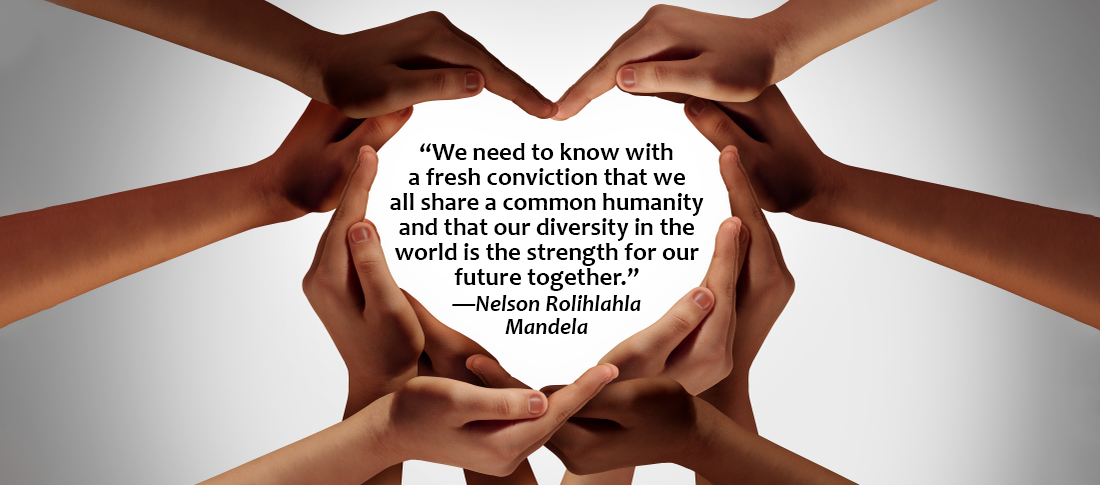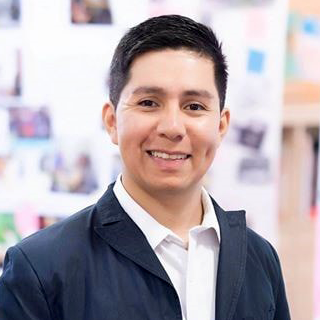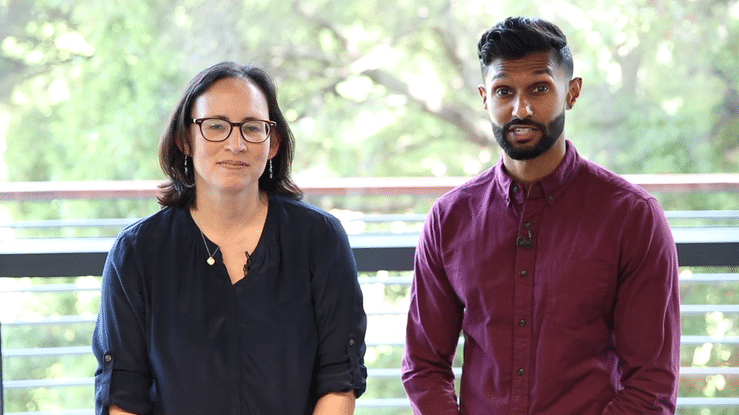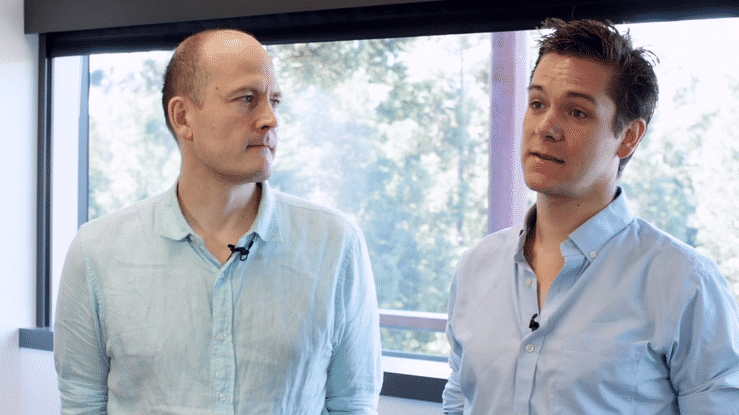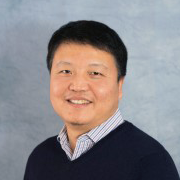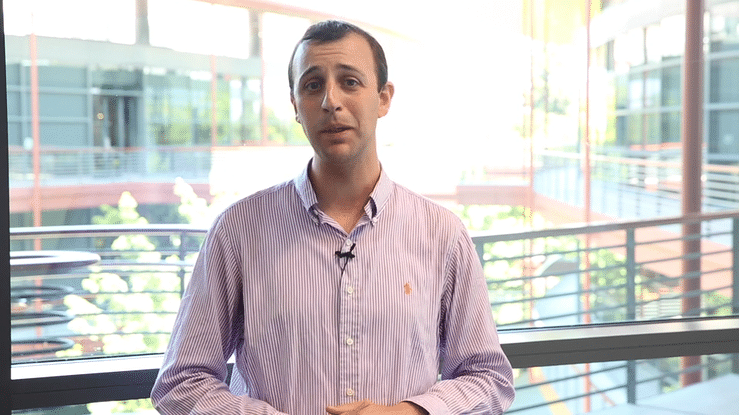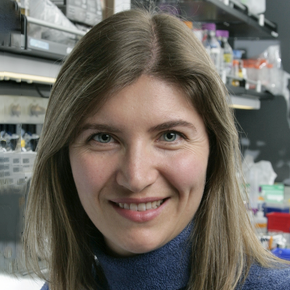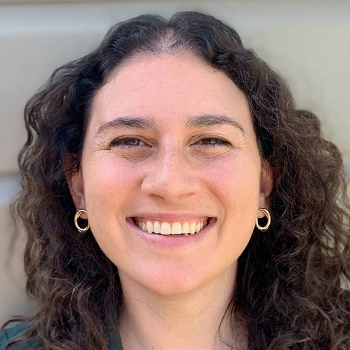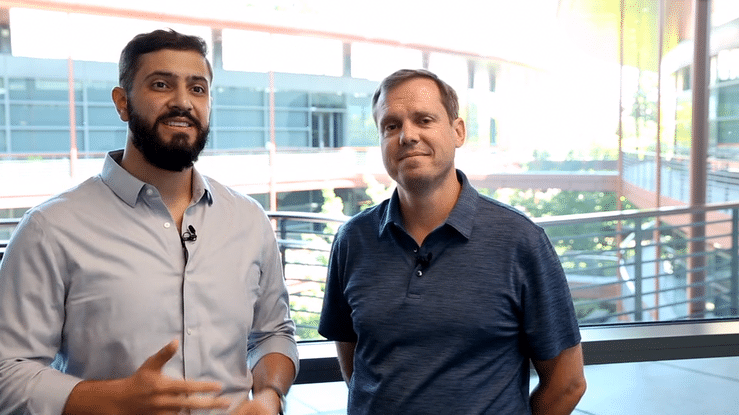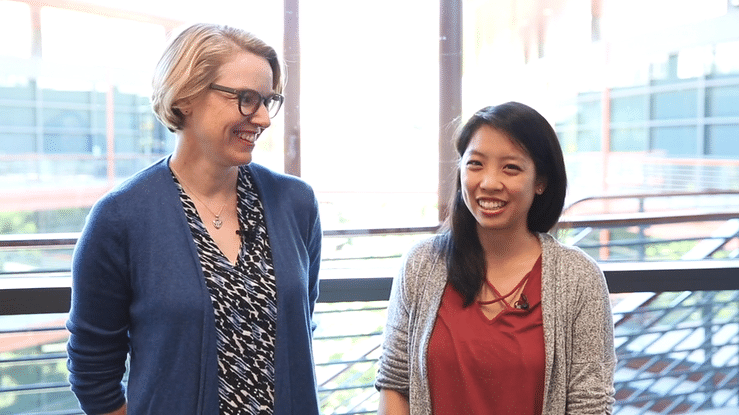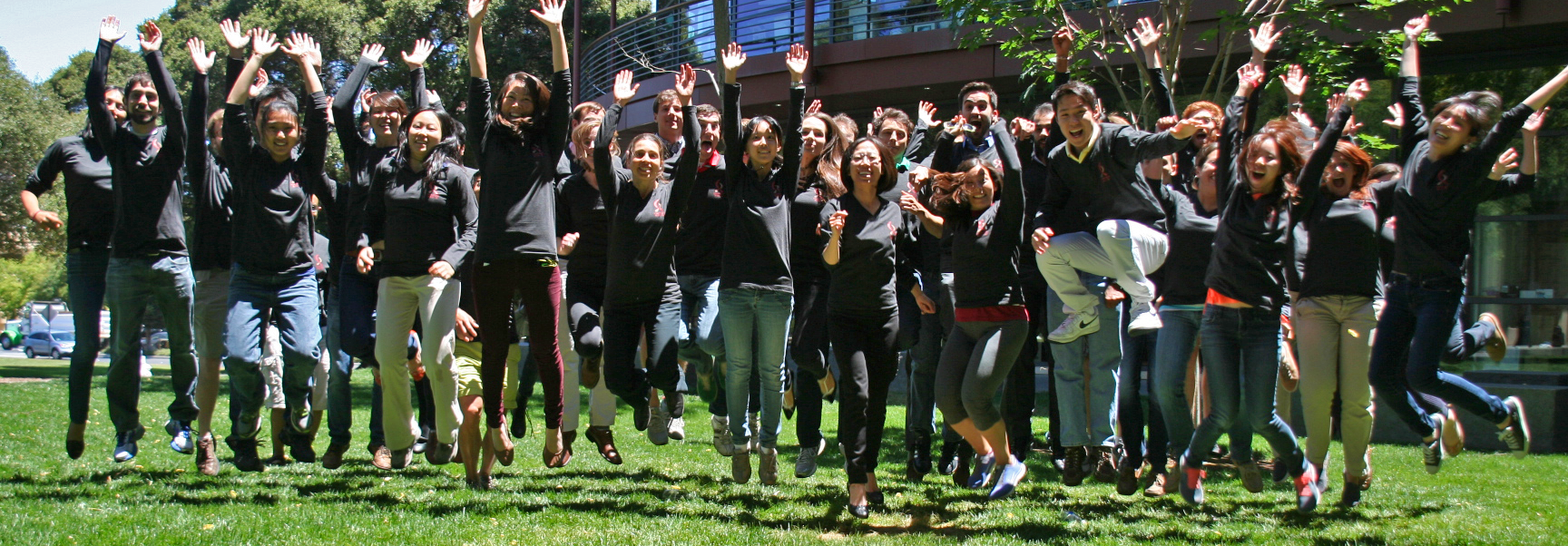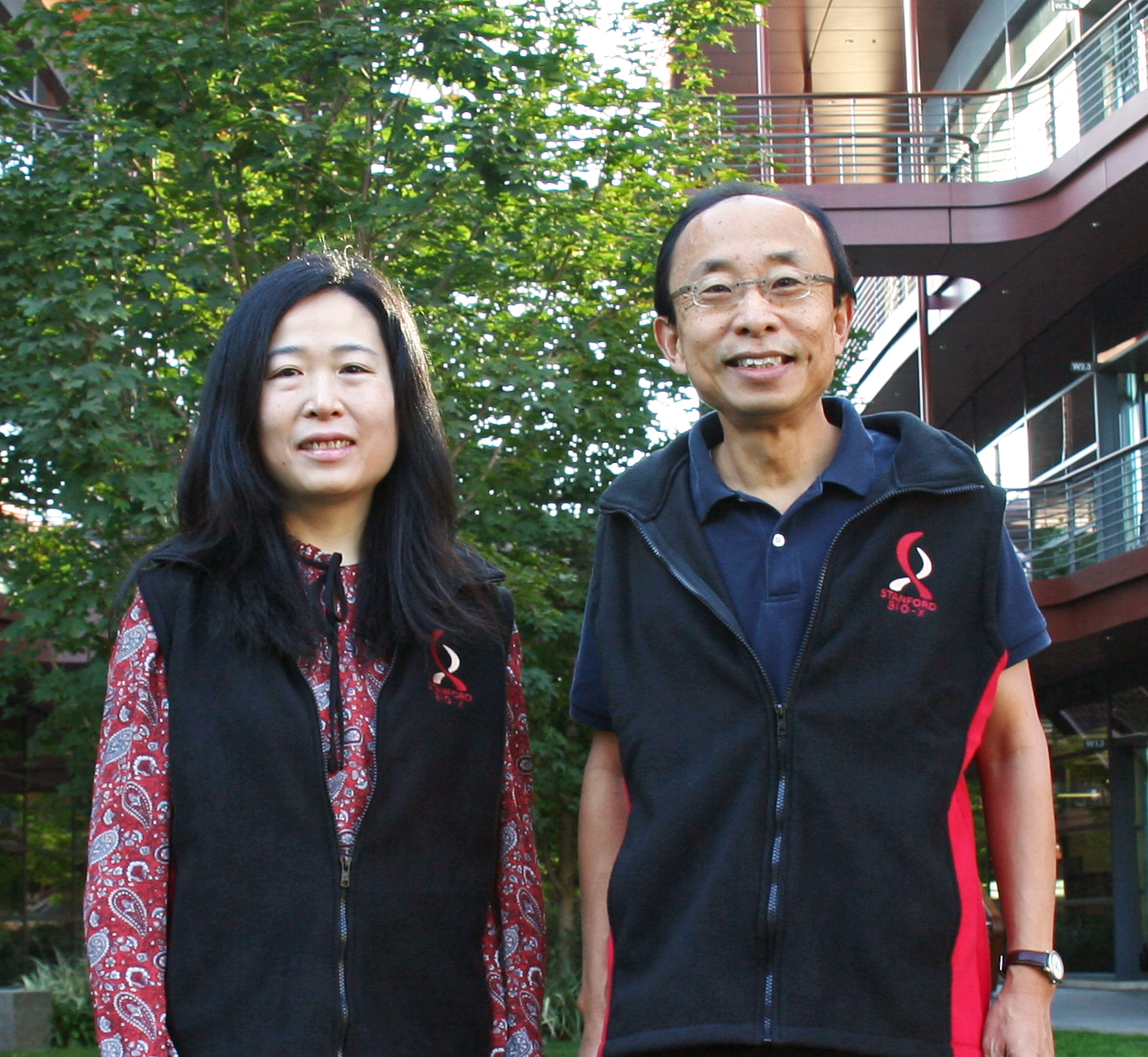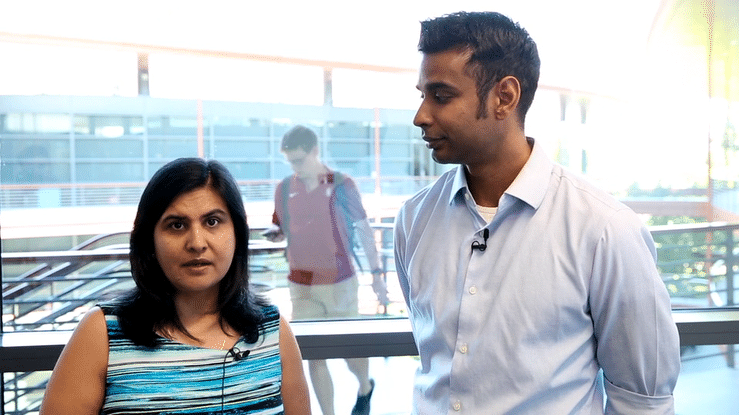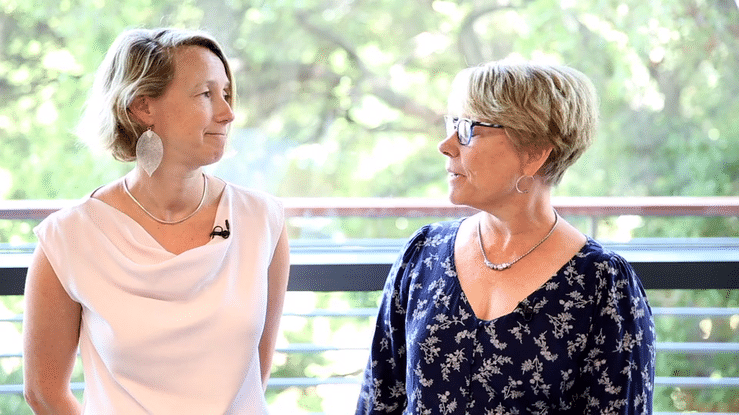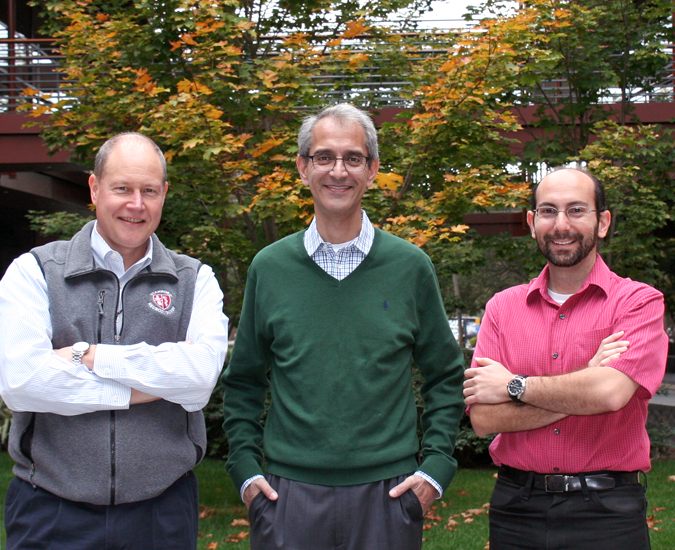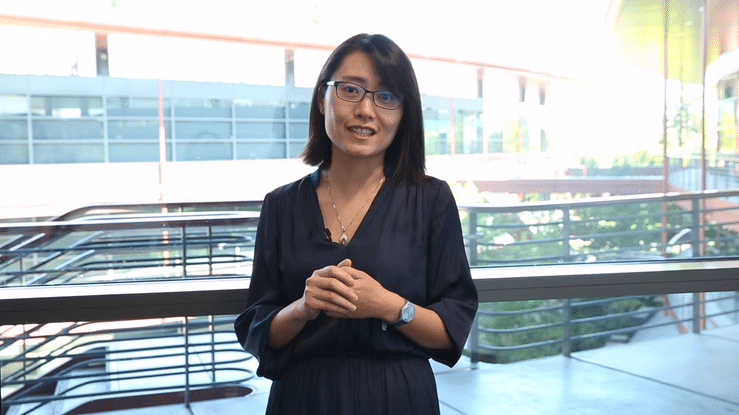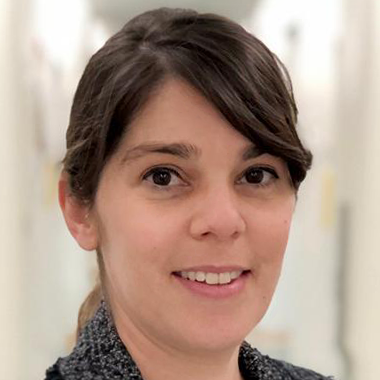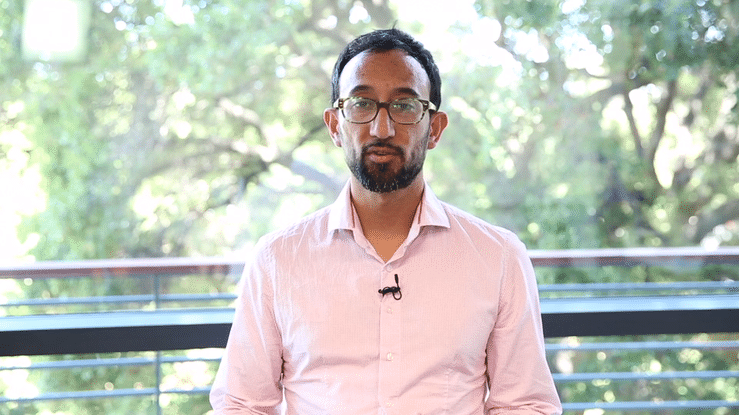Stronger Together:
For the past two decades, Stanford Bio-X has been committed to building a diverse and inclusive community. Bio-X programs have supported faculty, postdocs, graduate students, undergraduate students, and staff of diverse backgrounds. We strive to create a truly diverse community in which individuals of every gender, race, ethnicity, religion, sexual orientation; socioeconomic status and geographic backgrounds; life, school, and career experiences; physical abilities; and political, religious, and personal beliefs can contribute and flourish equally. We strongly believe that diversity is essential to excellence in research, in science, technology, engineering, and medicine. We work to maximize innovation and creativity by empowering our Bio-X community and drawing from the widest range of backgrounds, perspectives, and experiences. We understand that diversity must be accompanied by equity, inclusion, and sense of belonging for all members of our community. We are committed to learning and to supporting our community in our progress around the issues of diversity, equity, inclusion, and belonging. Together we can make a positive difference.
Stanford Bio-X Communities:
- Stanford Bio-X Undergraduate Summer Research Program Participants
- Stanford Bio-X PhD Fellows
- Stanford Bio-X Faculty
Resources:
Stanford Bio-X Undergraduate Summer Research Program Participants
2018 Stanford Bio-X Undergraduate Summer Research Program group photo.
The Stanford Bio-X Undergraduate Summer Research Program (Bio-X USRP) began in 2006 and has provided over 700 undergraduate students with the opportunity to conduct hands-on and virtual research, build awareness of interdisciplinary areas, and network with Bio-X faculty, postdocs, graduate students, and each other. This formative experience influences their subsequent work at Stanford and beyond.
“The Bio-X program was a great way for me to start my research career [and] laid the foundation for my future research in oncology.”
—2011 USRP Participant Julie Koenig
Our very first Stanford Bio-X USRP Participant, Allison Waters, said that the program changed her life and defined her career.
2018 Stanford Bio-X USRP Participant and 2019 Student Cohort Lead Anaïs Tsai adds: “This program has provided me not only with just fundamental experiences in the lab, but also with a community that has supported my curiosity spanning across the fields of physics, developmental biology, oncology, and biomedical research.”
Below are just a few success stories from Stanford Bio-X USRP alumni. Don't miss our 2022 Stanford Bio-X USRP brochure!
2013 Stanford Bio-X Undergraduate Summer Research Program group photo.
Return to top | Return to Stanford Bio-X Communities
Stanford Bio-X PhD Fellows
2019 Stanford Bio-X Fellows group photo.
The Stanford Bio-X Graduate Fellowship Program provides current Stanford graduate students whose research interests are interdisciplinary in nature with three years of funding support. Because Stanford Bio-X Fellows work on the cutting edge at the intersection of disciplines, their potential to generate transformative discoveries for the benefit of human health is profound.
To date, the Stanford Bio-X Fellowship program has provided 318 graduate students representing 30 different departments with awards to pursue interdisciplinary research and to collaborate with multiple mentors, enhancing their potential to generate profound transformative discoveries. Graduates of the program have transitioned to successful careers in the industry sector, co-founded start-up companies, and hold professorships at Stanford and its peer institutions.

2014 Stanford Bio-X Bowes Fellow Paola Moreno-Roman (pictured with her primary advisor, Dr. Lucy O'Brien) is now the Director of Strategic Partnerships at Foldscope Instruments, Inc., where she works on bringing powerful low-cost tools to communities around the world. You can hear more about her Stanford Bio-X Fellowship research in this video!
2013 Stanford Bio-X Bowes Fellow Herbert Silva now works at Johnson Space Center NASA in the Structural Engineering, Loads and Dynamics Branch. He is also the Communications Chair for the Human Systems Integration (HSI) employee resource group. Herbert has also conducted community service as part of five projects in five separate coutnries, using his engineering skills to provide communities with the basic resources to improve the quality of life and promoting community self-leadership.
2016 Mona M. Burgess Fellow, Stanford Bio-X SIGF Darrel Deo (pictured with his primary advisor, Dr. Allison Okamura) is now a postdoctoral scholar for BrainGate in the Neural Prosthetics Translation Laboratory (NPTL) directed by Dr. Krishna Shenoy and Dr. Jaimie Henderson at Stanford University. Hear more about Darrel's work in the video!
2017 Stanford Bio-X Bowes Fellow Payton Marshall (pictured with his primary advisor, Dr. Paul Bollyky) works at the interface of immunology and chemistry to engineer cells for immune tolerance. Learn more in the video!
2013 Mona M. Burgess Fellow, Stanford Bio-X SIGF Bo Zhang is the VP of chemistry and cofounder of Apostle, Inc. Apostle is a biotechnology company in Sunnyvale, California, which has been accepted by the Stanford StartX accelerator. Bo is also an associate professor at Southern University of Science and Technology of China.
2008 Stanford Bio-X Skippy Frank Fellow Adam de la Zerda is now an Associate Professor of Structural Biology at Stanford. Adam developed an imaging technique that provides a thousand-fold improvement in spatial resolution over conventional molecular imaging systems and has revolutionized scanning of the retina and other tissues. The de la Zerda Lab has filed 3 patents so far, and have received countless grants and awards. Hear more from Adam in this video!
2017 Stanford Bio-X Bowes Fellow Johanna O'Day (pictured with her primary advisor, Dr. Scott Delp) works on understanding freezing of gait in Parkinson's Disease patients. Johanna is passionate about transformative interdisciplinary research and making an impact. Hear more about her work in the video!
2008 Colella Family Fellow, Stanford Bio-X SIGF Viviana Gradinaru is now a professor of neuroscience and biological engineering at the California Institute of Technology (Caltech). She is also an investigator at Heritage Medical Research Institute, and the director of the Center for Molecular and Cellular Neuroscience.
2013 Stanford Bio-X Bowes Fellow Gabriela Fragiadakis is now an assistant professor of medicine at UC San Francisco, and the Director of the Data Science CoLab and leads the UCSF Data Library project.
2018 Bruce and Elizabeth Dunlevie Fellow, Stanford Bio-X SIGF Abdulmalik Obaid is now working at a stealth startup developing microelectronic devices in the Bay Area. With Dr. Nick Melosh, his Stanford Bio-X Fellowship research sought to bring together materials science and microfabrication techniques with electrophysiology to create the highest lateral density neuroprosthetic ever made, to study the mechanistic and therapeutic effects of deep brain stimulation (DBS) for Parkinson’s disease. Abdul and Dr. Melosh share more in this video!
2017 Stanford Bio-X Honorary Fellow Melody Dong (pictured with her primary advisor, Dr. Alison Marsden) uses fluid dynamics simulations to study how blood flow is affected by congenital heart defects, to work towards new treatments for children with pulmonary hypertension. Learn more in the video!
For more information on our current Fellows and a full list of our alumni, check out our 2022 Stanford Bio-X Fellowship brochure!
2014 Stanford Bio-X Fellows group photo.
Return to top | Return to Stanford Bio-X Communities
Stanford Bio-X Faculty
Photo of a Stanford Bio-X Interdisciplinary Initiatives Seed Grant Program Symposium poster session taking place.
Nearly 1,000 Stanford faculty members, and their entire labs and research groups, are affiliated with Stanford Bio-X. Stanford Bio-X empowers interdisciplinary faculty research through the Stanford Bio-X Interdisciplinary Initiatives Seed Grants Program, and offers numerous other opportunities to Stanford faculty who join the Bio-X community. The Clark Center is the hub for Stanford Bio-X and also supports the laboratories of 50+ Stanford Bio-X affiliated faculty members.

Drs. H.-S. Philip Wong (Willard R. and Inez Kerr Bell Professor in the School of Engineering) and Ada Poon (Associate Professor of Electrical Engineering) developed nanoscopic antennas with support from a Stanford Bio-X Seed Grant.
Drs. Nidhi Bhutani, Associate Professor of Orthopaedic Surgery, and Ovijit Chaudhuri, Associate Professor of Mechanical Engineering, collaborated with support from a Stanford Bio-X Seed Grant to develop new interdisciplinary treatments for osteoathritis. Check out the video!
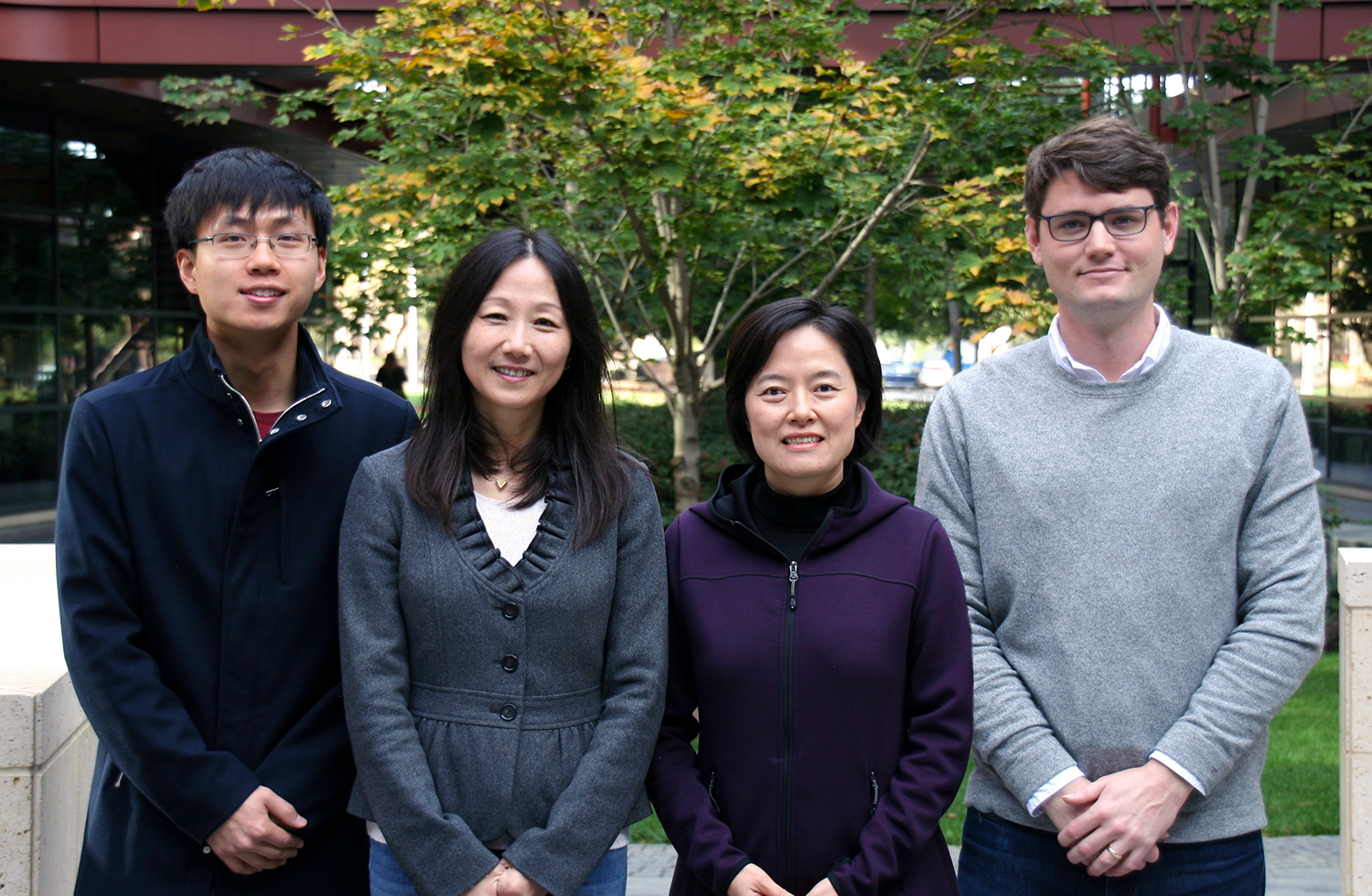
Left to right: Graduate student Yuxin Liu,
Dr. Zhenan Bao, Dr. Bianxiao Cui, and Bio-X
Bowes Fellow Allister McGuire.
Drs. Zhenan Bao, the K. K. Lee Professor in the School of Engineering and Bianxiao Cui, the Job and Gertrud Tamaki Professor of Chemistry, with Stanford Bio-X Bowes Fellow Allister McGuire and graduate student Yuxin Liu collaborated with support from a Stanford Bio-X Seed Grant. The team developed a soft, thin, flexible electrode to study heart cells.
A Stanford Bio-X Seed Grant supports a collaboration between Drs. William Tarpeh, Assistant Professor of Chemical Engineering, Laura Dassama, Assistant Professor of Chemistry, and James Swartz, the James H. Clark Professor in the School of Engineering and Professor of Chemical Engineering and of Bioengineering. They aim to have global impact by reimagining the nitrogen cycle, which has been drastically altered by industrial fertilizer production and inadequate wastewater treatment.
A Stanford Bio-X Seed Grant helped Drs. Polly Fordyce, Assistant Professor of Genetics and Bioengineering and Co-Director of the Stanford Microfluidics Foundry, and Martha Cyert, the Dr. Nancy Chang Professor and Chair of the Department of Biology, to launch a new interdisciplinary research technique called MRBLE-pep that allows researchers to measure hundreds of protein-protein interactions in the time and with the materials typically required to measure one. Check out the video to learn more!
A Stanford Bio-X Seed Grant has supported Drs. Paul Nuyujukian, Assistant Professor of Bioengineering and of Neurosurgery, Jaimie Henderson, the John and Jene Blume - Robert and Ruth Halperin Professor and Professor of Neurosurgery, and Krishna Shenoy, the Hong Seh and Vivian W. M. Lim Professor in the School of Engineering to make strides towards predicting seizures using intracortical brain-machine interfaces.
Stanford Bio-X affiliated faculty member Tirin Moore, whose lab resides at the Clark Center, was elected to the National Academy of Sciences and the American Academy of Sciences in 2021. Dr. Moore also received the 2021 NAS Pradel Research Award.
Dr. Fan Yang works at the interface of materials science, biology, engineering, and medicine. Dr. Yang has received support from Stanford Bio-X in the form of Seed Grants, PhD Fellows, and undergraduate summer research program participants, and shares her thoughts on the power of the Stanford Bio-X community as a catalyst. Check out the video!
Stanford Bio-X affiliated faculty member Kristy Red-Horse, whose lab resides at the Clark Center, studies how coronary vessels of the heart develop during embryogenesis and how they regenerate following cardiac injury. Dr. Red-Horse's goal is to discover novel developmental mechanisms while contributing knowledge towards the advancement of clinical treatments for cardiovascular disease.
Dr. Peter Santa Maria, a Stanford surgeon-scientist in otolaryngology and the associate director of SPARK's therapeutic translational program, shares his thoughts on how the Stanford Bio-X community has helped to unite researchers and clinicians. Check out the video!
Photo of a Stanford Bio-X Interdisciplinary Initiatives Seed Grant Program Symposium poster session taking place.
Return to top | Return to Stanford Bio-X Communities
Stanford Resources:
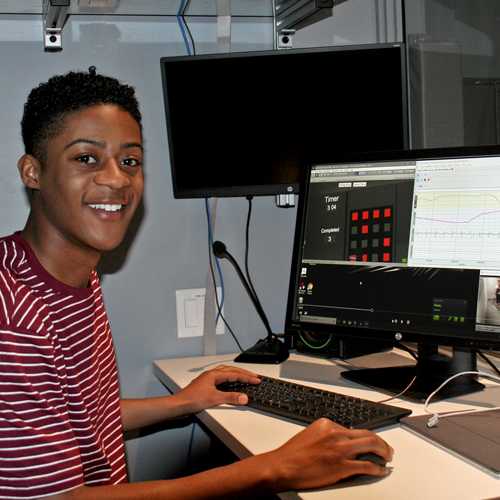
Photo of 2019 Stanford Bio-X Undergraduate
Summer Research Program participant
Marlon Washington.
- IDEAL (Inclusion, Diversity, Equity and Access in a Learning community) Initiative
IDEAL’s objective is to move Stanford culturally to the future. The charge of the IDEAL Initiative is to create positive change in these factors in the Stanford campus community. The success of our teaching and research missions depend on doing this well. And if we can create positive change in these areas, then we will make Stanford better for everyone. - Cardinal at Work - Anti-Racism Toolkit
The purpose of this toolkit is to support dialogue about racism within the Stanford staff community, and engage and unite the community in actions that will advance racial justice. - Stanford Center for Comparative Studies in Race & Ethnicity - RaceWorks
An open access, modular resource that educators, professionals, and facilitators can use to enhance their teaching and conversations about race. - Stanford Diversity Works
A resource for the latest diversity-related Stanford news and research as well as an overview of our community, events, resources, and programs. - Stanford Diversity and Access Office
The Diversity and Access Office (D&A Office) ensures University-wide compliance with federal, state and local regulations concerning non-discrimination and disability access. - Office of Accessible Education
The mission of the Office of Accessible Education (OAE) is to promote an accessible and inclusive environment for all students with disabilities. - Office for Inclusion, Belonging and Intergroup Communication (IBIC)
Stanford University’s Office for Inclusion, Belonging and Intergroup Communication (IBIC) works to build communication and understanding across difference. Their programs include curricular and co-curricular courses, educational workshops, training and consulting. - Martin Luther King, Jr. Research & Education Institute
Building upon the achievements of Stanford University's Martin Luther King, Jr. Papers Project, the King Institute supports a broad range of educational activities illuminating Dr. King's life and the movements he inspired. - Diversity at Stanford Medicine
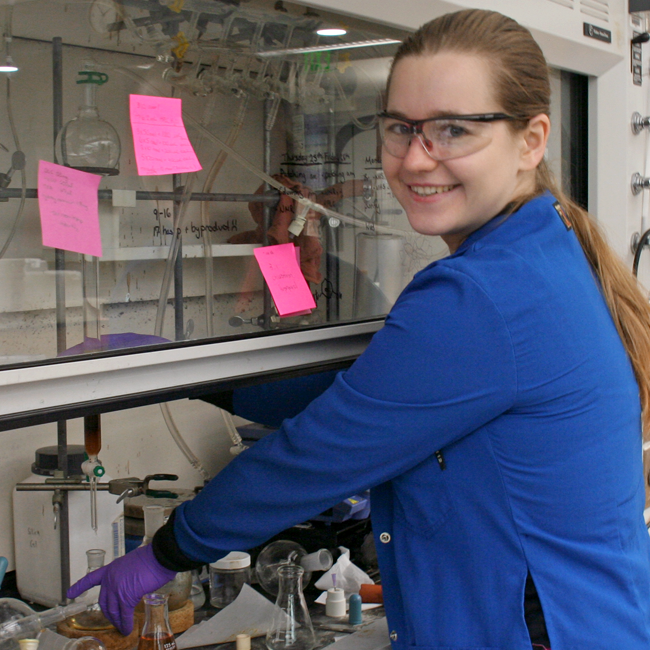
Photo of 2018 Bruce and Elizabeth Dunlevie
Fellow and Stanford Bio-X SIGF Anna Elleman.- Diversity Center of Representation and Empowerment (D-CORE)
A space where any member of the Stanford Medicine community interested in issues of inclusion and diversity can hold meetings or just hang out and study. - Stanford University Minority Medical Alliance (SUMMA)
The goal of the Stanford University Minority Medical Alliance (SUMMA) is to increase diversity in the health professions in order to better care for underserved communities. - Diversity Activity Groups and Events
- BioAIMS - addressing the needs and concerns of current minority graduate students in the biosciences
- Biosciences Peer Mentors (BioPeers) - providing free and private peer-to-peer support for the Biosciences graduate student community
- Student National Medical Association (SNMA) - working to increase the number of culturally competent and socially conscious physicians, while also addressing the needs of underserved communities of color
- Stanford University Postdoctoral Association (SURPAS) - creating an inclusive community where every postdoc feels like they belong and can make valuable contributions
- Minority Faculty Networking - meetings offering an occasion to meet with and learn from colleagues
- Stanford Black Bioscience Organization (SBBO) - seeking to build a community among Black bioscientists in the School of Medicine in conjunction with the greater Black community at Stanford
- Stanford Black Postdoc Association (SBPA) - a vibrant community of the Black postdocs, across all disciplines, at Stanford University
- Sisters in STEM - addressing the particular needs and interests of Black women graduate students and postdoctoral scholars in science and engineering
- Latino Medical Student Association (LMSA) - promoting the advancement of Latinos in academic, clinical, and community medicine
- Stanford Latinx Postdoc Association (SLPA) - striving to improve, enhance, and enrich the Latinx postdoctoral experience at Stanford
- Stanford Hermanas in STEM - uniting and building a community of support among Latina graduate students and postdoctoral scholars on campus
- Society for Advancement of Chicanos and Native Americans in Science (SACNAS) - fostering the success of underrepresented scientists in attaining advanced degrees, careers, and positions of leadership in STEM
- Stanford American Indigenous Medical Students (SAIMS) - providing opportunities to exchange academic and professional information pertaining to the health care needs of Native Americans, Alaskan Natives, and Native Hawaiians
- Asian Pacific American Medical Student Association (APAMSA) - bringing together those who are interested in health issues that affect the Asian-American community to have a strong, collective, public, and political voice
- Stanford Medicine Abilities Coalition (SMAC) - fostering and advocating for the equal treatment and well-being of all students, trainees, faculty and staff at Stanford Medicine, regardless of their physical or cognitive differences
- Medical Students with Disability and Chronic Illness (MSDCI) - providing a support system and platform for advocacy for students with disabilities and chronic illness
- Stanford Neurodiversity Project - uncovering the strengths of neurodiverse individuals and utilizing their talents to increase innovation and productivity of the society as a whole
- Women Faculty Networking Group - soliciting topics and speakers of interest from women faculty throughout the year
- Women and Medicine (WAM) - supporting women pursuing a career in medicine and promoting awareness in the medical and university community about gender disparities in medicine
- GME Women in Medicine Leadership Council (WIM) - providing community-based events, skill-building events and resources
- Women in Internal Medicine Residency Group - offering a safe and supportive environment to discuss issues related to gender in medical training, as well as dedicated mentorship and practical workshops for career development
- LGBTQ+ Postdocs - bringing together members of their community across Stanford University to build support structures and provide professional guidance
- LGBTQ+ Faculty Networking - providing a networking forum for LGBTQ+ faculty
- LGBTQ Meds - raising awareness of queer health issues and promoting equal social and political rights for lesbian, gay, bisexual, transgender and queer people
- +OUTlist - supporting Stanford Medicine LGBTQ+ individuals in community-building, mentorship, and visibility
- Stanford Medicine LGBTQ+ Forum - featuring LGBTQ+ members of the Stanford Medicine community, as well as networking opportunities and opportunities for allies to show support
- Out in Science, Technology, Engineering, & Mathematics (oSTEM@Stanford) - serving sexual and gender minority students, with a primary goal of fostering success in leadership, academic pursuits, and professional activity
- Stanford Muslim Medical Association (SMMA) - striving to foster a spiritually nurturing, tolerant, and inclusive Muslim community at the Stanford School of Medicine and affiliated hospitals
- Graduate Medical Education (GME) Diversity Committee - creating a medical community that is reflective of the community and the world that they serve
- Psychiatry Residency Diversity and Inclusion Advisory Council - supporting program-specific and Stanford-wide diversity initiatives
- Anesthesia Diversity Council - fostering diversity, providing mentorship, creating scholarly opportunities and preparing Stanford's anesthesiologists to address the health needs of a diverse population
- Medicine Diversity Committee - a group of Internal Medicine residents and medicine sub specialty fellows committed to diversity
- Surgery Diversity Committee - creating an environment that fosters belonging, respect, and value for all
- Dermatology Diversity Committee - fostering an environment of diversity and inclusion within our department and in the future leaders we train
- Radiology Diversity Initiative - democratizing medicine by assembling and maintaining a critical mass of diverse faculty with far-reaching backgrounds, experiences, and ideas
- Pediatrics Diversity Committee - informing, recruiting, and supporting prospective candidates who identify as underrepresented minorities based on factors such as race, ethnicity, socioeconomic status, sexual orientation, and gender identity
- Genetics Advocacy Committee - improving equity and inclusion in the Department of Genetics
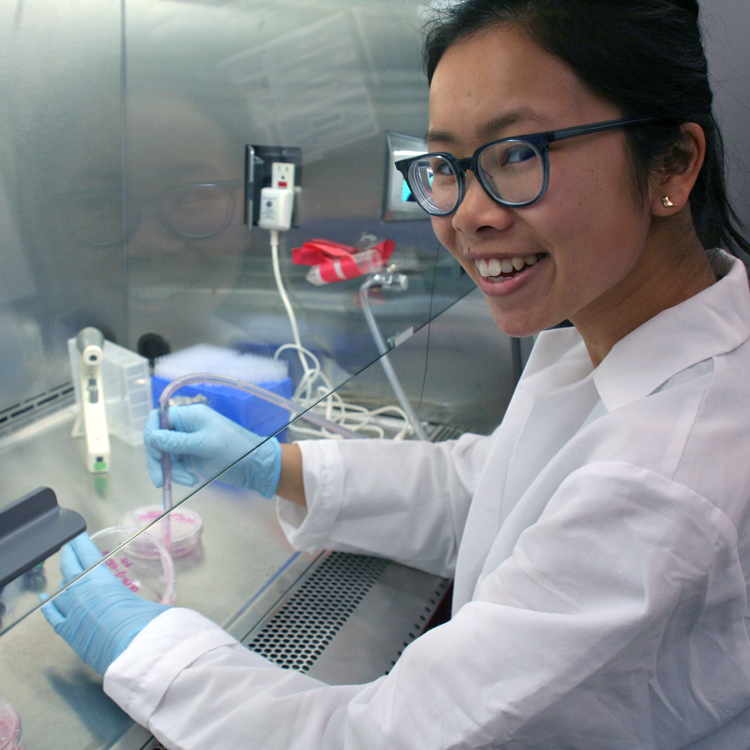
Photo of 2017 Stanford Bio-X Undergraduate
Summer Research Program participant
Cindy Nguyen. - Diversity Center of Representation and Empowerment (D-CORE)
- Stanford Medicine Diversity Cabinet
The Diversity Cabinet coordinates and integrates program and communication strategies across Stanford Medicine to leverage diversity, equity, and inclusion partnerships. - Stanford Medicine Diversity Cabinet LGBTQ+ Subcommittee
The subcommittee meets to discuss ongoing Stanford Medicine Sexual and Gender Minority (SGM) efforts, such as medical education curriculum, healthcare for the LGBTQ+ community, and seminars, trainings, and workshops representing the latest research on the LGBTQ+ community. - Annual Diversity & Inclusion Forum
The Annual Diversity & Inclusion Form is an enriching opportunity to learn about tools and strategies to enable participants to become effective change agents for diversity and inclusion in medical education. - Stanford University Staff Affinity Groups
Stanford staff groups provide all staff members with opportunities for professional, educational, and social support. - Clinical Diversity Liaisons
The Office of Faculty Development and Diversity Liaisons are appointed by School of Medicine Clinical Department Chairs to serve as departmental representatives that liaise between the Chairs, members of their specific department, and the Office of Faculty Development and Diversity to assist with faculty concerns, ideas and the advancement of excellence at Stanford School of Medicine. - WellMD & WellPhD Center
The Stanford Physician Wellness Committee's vision is to "Create a practice environment that supports optimal physician wellness and professional satisfaction by ensuring the organization’s leadership, goals, structures and systems facilitate a healthy professional work-life."… - Stanford Health Justice Coalition
The Stanford Health Justice Coalition is committed to the protection of patients’ rights and access to healthcare. - Antiracism Book Club
This is a media-based discussion group geared toward Stanford Health affiliates, students, staff, and faculty. The group meets once a month to explore issues relevant to racism in medicine through the written word and videos.
- Stanford Biosciences Diversity Programs
- Stanford ADVANCE Summer Institute - ADVANCE is an eight-week summer transition program designed to give incoming graduate students early exposure to research in their Biosciences Home Program over the summer. Participants attend workshops that acclimate them to Stanford University and develop academic, professional, and leadership skills.
- Student Outreach to Alumni Resources (SOAR) Mentor Program - The mission of the SOAR Mentor Program is to foster mentorship opportunities across the Stanford Biosciences community. This comprehensive mentoring program exposes students and postdocs to a breadth of career options and pathways, promoting greater community and collaboration with faculty and alumni.
- Solidarity, Leadership, Inclusion, Diversity (SoLID) Mentorship Program - The SoLID Mentorship Program connects graduate students with faculty who can provide additional mentorship to guide and support students on issues that may be largely outside of their research, such as mental health and wellness, academic activism, microaggressions, impostor syndrome, among others.
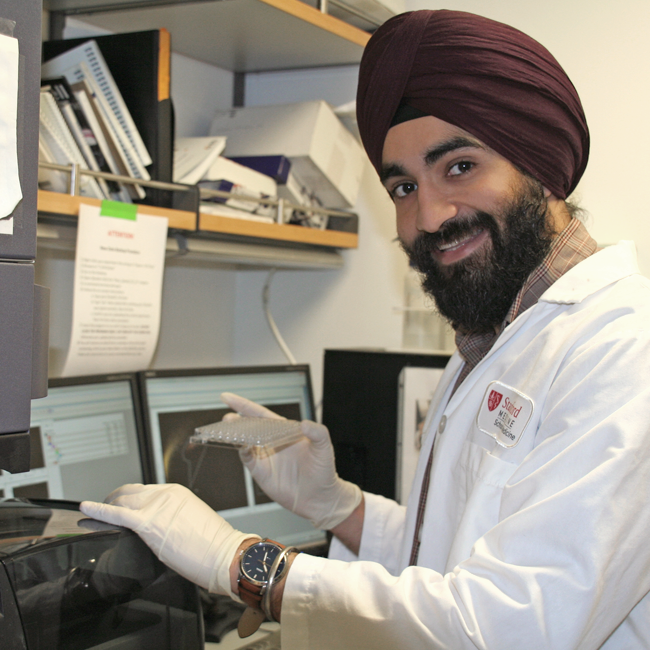
Photo of 2018 Stanford Bio-X Bowes Fellow
Gunsagar Gulati.
- Stanford Engineering Equity and Inclusion Initiatives
- The Society of Women Engineers (SWE) - a driving force to establish engineering as a highly desirable career for women through training and development programs, networking opportunities, scholarships, outreach and advocacy activities, and much more
- Womxn of Color in Engineering (WOCE) - encouraging Black, Latinx, American Indian, and/or Pacific Islander womxn graduate students to bond over shared experiences, ally with mentors, and enhance their leadership and professional development skills as part of an extensive network of university-wide support services
- The Society of Black Scientists and Engineers (SBSE) - seeking to increase the number of culturally responsible Black scientists and engineers who excel academically, succeed professionally, and positively impact the community
- Black Engineering Graduate Student Association (BEGSA) - building a sense of community among the Black Stanford Engineering community, facilitating students’ professional development and academic success by providing forums for engagement, discussion, and collective learning
- The American Indian Science and Engineering Society (AISES) - encouraging American Indian and Alaska Native students to enter the world of science and engineering while preserving their cultural heritages, working to decrease isolation, increase self-esteem, and support the academic achievement of community members through informal and formal practices
- Stanford Native American Graduate Students (SNAGS) - a part of the Native American Cultural Center (NACC), encouraging students to engage with resources and events associated with a vibrant Indigenous community in the surrounding Bay Area
- The Stanford Society of Latinx Engineers (SOLE) - supporting innovative engineers who value familia, professionalism, outreach, and academics
- Latin@ Engineering Graduate Student Organization (LEGOS) - seeking the success of Latin@s pursuing graduate studies in engineering at Stanford
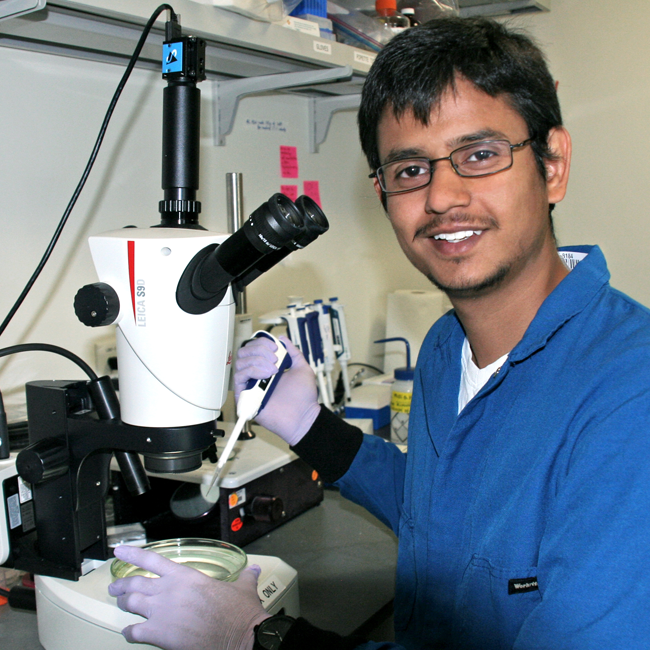
Photo of 2019 Stanford Interdisciplinary
Graduate Fellow (Anonymous Donor) and
Stanford Bio-X SIGF Pranav Vyas.
- Stanford Humanities & Sciences Diversity Resources and Programs
- Diversity & Inclusion at SLAC
- GRAD Diversity Day
An event highlighting the supportive community and resources offered by Stanford to allow diverse students to thrive. - DARE: Diversifying Academia, Recruiting Excellence
The DARE (Diversifying Academia, Recruiting Excellence) Doctoral Fellowship Program awards two-year fellowships to advanced doctoral students who want to investigate and prepare for academic careers and whose presence will help diversify the professoriate. - EDGE: Enhancing Diversity in Graduate Education Doctoral Fellowship Program
The Enhancing Diversity in Graduate Education (EDGE) Doctoral Fellowship Program supports the recruitment and academic success of outstanding doctoral students who have the potential to enhance the diversity - broadly defined - of their academic disciplines and fields. - Stanford Women's Community Center
The Women's Community Center exists to facilitate growth and engagement for Stanford students around issues of gender, equity, identity, and justice. - Staff Diversity Groups
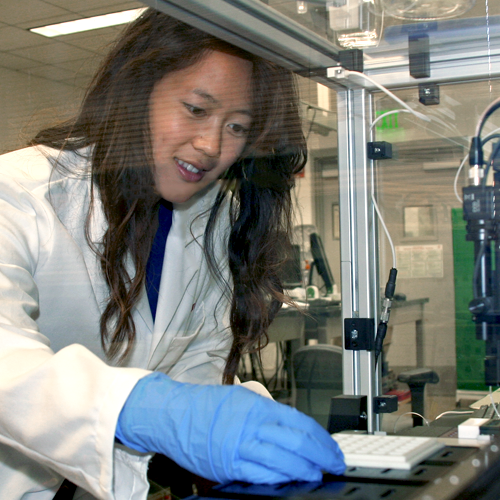
Photo of 2016 Bruce and Elizabeth Dunlevie
Fellow and Stanford Bio-X SIGF Elaine Ng.
External Resources:
- UCSF Guide to Talking About Race and Equity (for Faculty)
This guide was created specifically to help faculty to talk about race and inequities in science with their research team. - UCSF Guide to Talking About Race and Equity (for Students and Postdocs)
This guide was created to help graduate students and postdoctoral scholars talk to their PIs about race and inequities in science and within their lab or research team.

